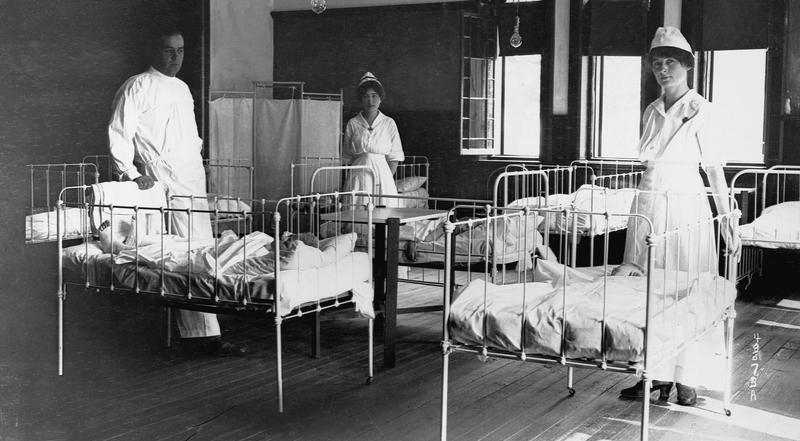Ethical Medical Practices of the Past?
By | September 27, 2018

Medical Practice is just that - medical "practice." Physicians attend college to learn new techniques and procedures, but when its all said and done, they are still just practicing medicine. Sometimes they get it right and sometimes they fail, but with new technology coming out all the time, there is hope for the future.
Since the 20th century, throughout industrialized countries, polio has been feared because of the massive number of cases of children being paralyzed as a result. For this reason, vaccines were introduced in the 1950s and 1960s which helped bring polio under control in these countries, and for the most part, reduced its occurrence to almost zero.
But, in other developing countries, it was not as recognized as being a problem even though in the 1970s, according to lameness surveys, it was widespread. After these survey results came out, routine immunizations became worldwide. The Global Polio Eradication Initiative began in 1988, which is an attempt to totally wipe out polio in order to have a polio-free world. Back in 1916, there was an epidemic that started in New York City. It was so devastating that the fatality rate was extremely high with only four hospitals treating 9,000 cases, and back then, laboratory knowledge was undeveloped. By the time children got to the hospital, the virus had already spread to their motor neurons, which meant the damage had already started. Now the global occurrence of polio cases is down by 99%.

This is not your ordinary barber. It is shocking what barbers used to do back in medieval times and even the middle ages. It is believed that, in primitive times, tribesmen had their hair cut by medicine men and priests with some even believing that spirits could enter your body through your hair. Egyptians were so superstitious that they would not only have their face shaved but also their private parts as depicted in their papyrus and monuments and this would be done every few days. By the Middle Ages, barbers were not just barbers. They also pulled rotten teeth, dressed wounds, set bone fractures, and perform simple operations as well as phlebotomy. Doctors back then would refer patients to barbers to do their “bloodletting.”
Barbers would advertise this service by displaying patients’ blood in bowls on the windowsills of their shops until this form of advertising was banned. Advertising then introduced the barber pole. The meaning of the barber pole is quite interesting. The pole represents the rod that the patient was to grab a hold of in order to make their veins bulge for the barber to open up the vein. The brass ball at the top of the pole depicts the basin where the blood would be dispensed into. The red and white stripes of the pole would be the blood-soaked bandages that would be washed and hung on a rod to dry outside. When the wind would blow, the bandages would twist in such a way that it simulated what we see today as a spiral image on the barber pole.

Strange Medical Procedures
One of the many weird methods of practicing medicine that doctors used was called a whirling chair used in the 19th century to treat schizophrenia. The chair was made to spin the patient around until they passed out, with the belief, that the spinning would shuffle the contents of the brain, thus curing them of their mental illness.
In the early 1900s, a doctor with no medical qualifications became one of the wealthiest doctors in America, claiming he could cure impotence and related sexual problems. His method was to implant goat testicles into the man, but unfortunately, many patients died.
In the 17th century, with a lack of sterile tools, doctors would slice the tissue over the teeth of babies with a scalpel to help their teeth to come through. The trauma, more often than not, caused death.
In the 12th century, ancient Romans mistakenly believed that blood from gladiators who fell could cure epilepsy, so the apothecaries would keep a stock of mummy powder that came from stolen mummies from Egypt.

From the 1930s into the 1950s, lobotomies were performed, mainly on women, for treatment of mental illness. It involved cutting away most of the connections to and from the anterior part of the brain. In the beginning, it was an emergency procedure used for extreme cases. Following surgery, patients would experience confusion and incontinence as well as permanent mental deficiency among other significant side effects. If that wasn’t bad enough, a high number of patients would commit suicide. Oddly, the man who invented this procedure in 1949 actually won the Nobel Prize for Medicine. That’s scary!

Potions have been created for all kinds of ailments since the 18th century claiming to cure all sorts of diseases and even produce long life. The problem with these claims are that the “elixir” is essentially worse than the “cure.” They not only taste bad but the ingredients consist of alcohol and hard drugs such as cocaine, heroin, and morphine. Money hungry drug companies have been peddling these elixirs for years making outlandish claims to cure everything from an upset stomach to the common cold.
Another strange concoction was created by a 19th century Italian chemist that he named Vin Mariani. Endorsed by 8,000 doctors (according to popular ads), it was supposed to be a tonic treated with coca leaves that was considered a healing wine not only for adults but also for children. It was the inspiration for John S. Pemberton to create Coca-Cola. Look at all the people today that drink Coca-Cola and are addicted to it. Could there be a connection there?

